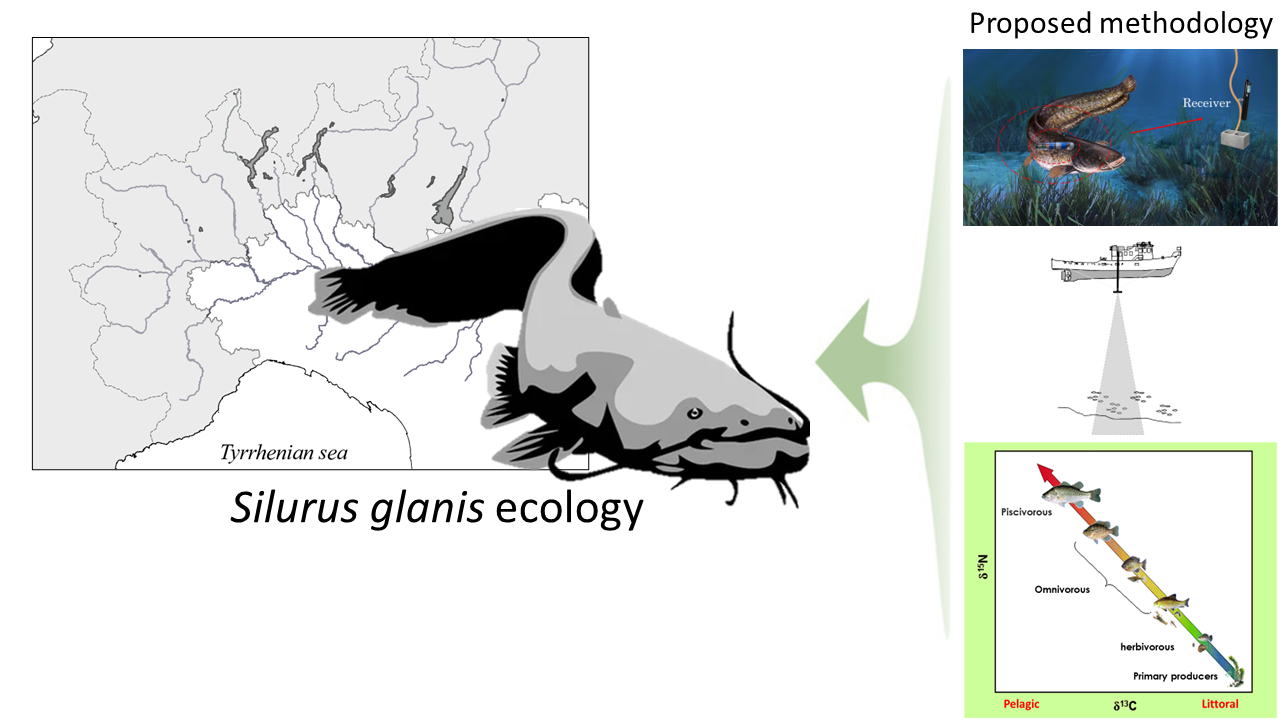- Personal menu
- Profile
- Phd thesis
- Research activities
- Training
- Publications
- Other activities
- Other content
Dott. Stefano Brignone
- 505306
- Phd: 39th cycle
- Department of Life Sciences and Systems Biology
- Matriculation number: 1093676

Phd thesis
Alien freshwater fish, defined as alien species introduced in a novel environment (intentionally or unintentionally) which have established self-sustaining populations, are recognized as one the major causes behind the decline of aquatic fauna globally. Among the alien freshwater fish introduced in Italy, the European catfish (Silurus glanis L.) is one of the most wide-spread species, it was introduced in Italy at the end of 1970 and was able to establish in few decades self-sustained populations in both lentic and lotic fresh waters, especially in northern Italy. It is a highly invasive species that can severely impact the aquatic biodiversity because of its trophic plasticity and top-predator position. The European catfish ecology in the introduced environments of southern Europe has been rarely investigated, in particular in regard to its habitat preference and trophic/reproductive migrations. Understanding alien fish ecology is fundamental to properly evaluate and predict their actual and future impacts on freshwater habitats, as well as for developing effective control programs. In order to limit the European catfish spread in southern European lakes and reservoirs, three European countries are collaborating in an international LIFE project called PREDATOR. My PhD project is funded by this project and my research activities will be focusing on three different scientific approaches. Acoustic telemetry will be implemented in two small lakes of NW Italy (Lake Avigliana piccolo, Lake Sirio), where it will be possible to study at a fine-scale catfish movement. Hydroacoustic will be used to estimate fish abundance and biomass within some Italian and Czechs lakes. Stable isotope analysis will be used to study the trophic relations occurring in 10 target lakes of Northern Italy, both with and without catfish. Together with these activities I will collaborate within different national and international project at the IRSA-CNR Institute (Verbania).

Research activities
-De Santis V., Brignone S., Čech M., Eckert E.M., Fontaneto D., Magalhães F., Martelo J., Ribeiro F., Vejřík L., Volta P. (in press) LIFE PREDATOR: PREvent, Detect, combAT the spread of SiluRus glanis in south European lakes to protect biodiversity. NeoBiota.
-Brignone S., De Santis V., Putelli T., Molina C., Piccinini A., Carmichael RA., & Volta P. (2022). What’s the effectiveness of stocking actions in small creeks? The role of water discharge behind hatchery trout downstream movement. Peerj 10:e14069 https://doi.org/10.7717/peerj.14069
-De Santis, V., Cicala, D., Baneschi, I., Boschi, C., Brignone, S., Iaia, M., Zaupa, S., & Volta, P. (2022). Non-native Fish Assemblages Display Potential Competitive Advantages in Two Protected Small and Shallow Lakes of Northern Italy. Global Ecology and Conservation, e02082.
-Mor, J. R., Ciampittiello, M., Brignone, S., Jeppesen, E., & Volta, P. (2022). Fish communities in Italian sub-alpine lakes: Non-native species and anthropogenic pressures increase community dissimilarities. Science of The Total Environment, 832, 154959.
-Relazione di sintesi sull'attività di campionamento della fauna ittica nei Laghi di Ivrea (ZSC IT 1110021) e Laghi di Meugliano e Alice (ZSC IT 1110034). 02/2021
-Cicala, D., Polgar, G., Mor, J. R., Piscia, R., Brignone, S., Zaupa, S., & Volta, P. (2020). Trophic Niches, Trophic Positions, and Niche Overlaps between Non-Native and Native Fish Species in a Subalpine Lake. Water, 12(12), 3475.
-Brignone, S., Englund, G., Pizzul, E. (2019). Meristic traits and stable isotopes as tools to unravel the rapid divergence process in European whitefish. (Tesi magistrale).
-Fortuna, L., Brignone, S., & Tretiach, M. (2016). Confronto tra biomonitors di vecchia e nuova generazione: Mossphere con un clone di Sphagnum palustre devitalizzato contro Pseudevernia furfuracea. In NOTIZIARIO DELLA SOCIETÀ LICHENOLOGICA ITALIANA.




